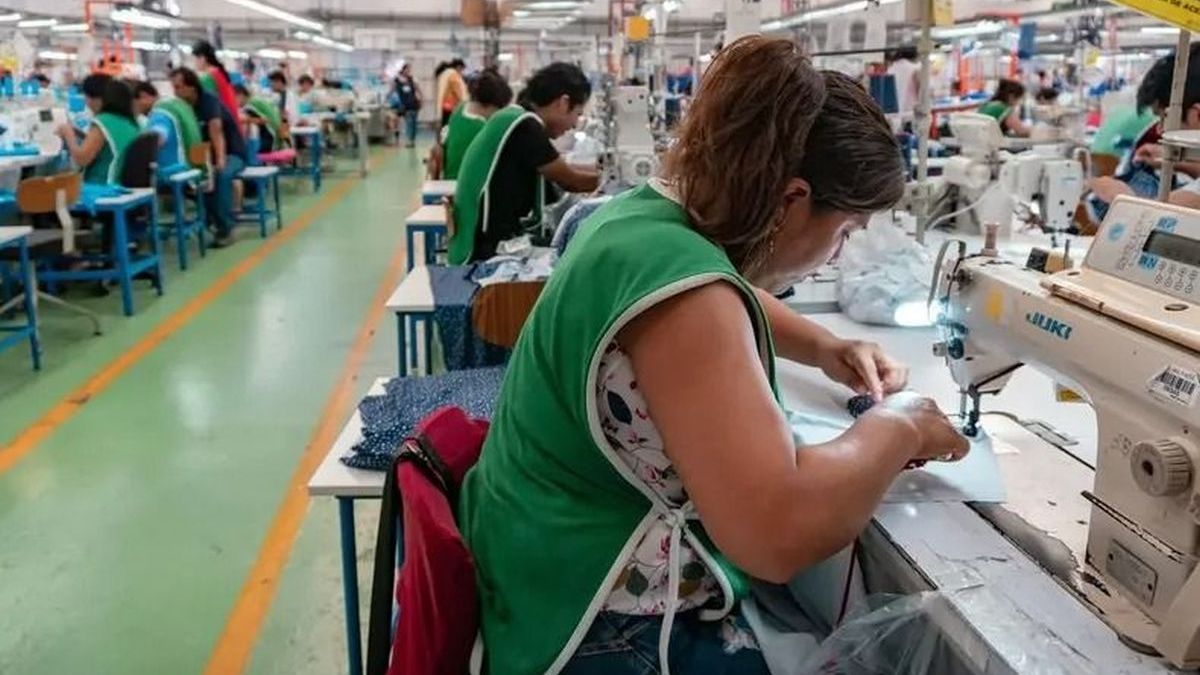As reported last month Found, A basket of clothing costs almost 40% more compared to the average of countries in the regionnot only for the tax pressurebut also for a combo of factors, such as marked protectionism, constant exchange rate and local macroeconomic instabilityas well as a productivity drop.
However, the factors that make the textile-clothing industry less competitive present tensions between employment, formality and competitiveness and prices. For this reason, the organization proposes three central axes to improve the competitiveness and working conditions of the sector:
- Rcomprehensive review of the foreign trade scheme
- Incentives to improve levels of competitiveness and formalization
- Socio-productive integration.
“This proposal seeks to address these challenges in a sustainable path over time by improving the incentive system and promoting specialization in those segments where the competitive advantages are greatest. There is no magic: it requires time and the will to all actors to carry out the transformation of the sector”, they highlighted from Found.
Clothing: three keys to a more sustainable system
Fundar proposes as its first axis the comprehensive review of the foreign trade schemewhere a “comprehensive review of import duties of inputs and products of this industry” with two central criteria: on the one hand, minimize tariffs of inputs and products that are no longer manufactured in Argentina or are manufactured far below local needs; and on the other, prioritize the reduction in products with higher surcharges with respect to the regional average.
It also includes the elimination of PAIS import taxwhich is currently the 7.5% and “that makes both imported products and national production that uses foreign inputs more expensive.” It should be noted that, by December, when its validity period expires, it is expected that this perception will no longer exist.
He also proposes the design and implementation of para-tariff measures that generate an improvement in production practices, as well as formality, quality and compliance with environmental standards of the industry.
Finally, he warns that the use of discretionary tools as were the non-automatic import licenses (LNA)hinders foreign trade and were highly discretionary to the government in power.
Incentives, competitiveness and formalization
As a second axis, it proposes incentives to improve the levels of competitiveness and formalization of the industry. They include a reduction of non-wage labor coststhrough a regime of employer contributions for small businesses and one of Non-Refundable Contributions (ANR) that subsidize up to 10% of the same tax for medium and large clothing companies.
“The sum of both instruments would allow us to subsidize part of the employer contributions of 58,000 of the 101,000 formal salaried jobs that this industry had in 2023. In turn, the instruments would allow us to reduce the labor cost of the textile-clothing industry by 6.3%. (11.8% in clothing and 2.9% in the textile link)”, highlights the Fundar report.
At the same time, it suggests that a system of tax benefits for the sector, they would improve competitiveness. In this case, it promotes the elimination of the tax on debits and credits and transforming it into a collection system as a payment on account of another tax, which could be VAT or Profits. Also, he mentions that it could be “negotiate” a tax reform with the provincial administrations, to reduce the tax on gross income.
Finally, it adds the possibility of creating a “universal benefits program to formalize retail demand for clothing”which aims to stimulate the growth of formal transactions for the purchase and sale of clothing and textile products of national origin.
The third axis points to the socio-productive integration. “Clothing manufacturing employs 186,000 people in Argentina, of which 134,000 (72%) work informally. 83% of informal employment in this sector, equivalent to about 111,000 people, takes place in productive units of less than of five workers”it was specified in the report.
In this sense, the proposal aims particularly to agree “clothing manufacturing poles enabled” promoted by local governments to alleviate informality, improve living conditions of self-employed workers in the sectorextend the minimum floor of tax and labor formality and improve productivity.
They would be “cooperative poles”, according to sources from Fundar a Scope. To do this, there are at least two alternatives: take advantage of the idle spaces of local governments and prepare them for these productive units or provide home sewers with tools to rent to private landlords, such as real estate guarantees or surety insurance.
“For this, some existing programs in public banking can be taken advantage of or even some public banks – such as Banco Ciudad or BAPRO – can design new lines that are suitable for such purposes,” they argued.
Embed – https://publish.twitter.com/oembed?url=https://x.com/fundarpoliticas/status/1846239963056075123&partner=&hide_thread=false
When we research a topic, we do it seriously. After going through each link in the textile-clothing chain, we think about how to transform it into a more competitive and formal industry, less dependent on trade protection, less expensive and with better working conditions. pic.twitter.com/fksoWJWRHb
— Found (@fundarpoliticas) October 15, 2024
The three axes addressed by Fundar aim to improve the economic sustainability of the sector, from the perspective of competitiveness for, like this, reduce dependence on trade protectionwhich was the kickoff of the textile industry in recent years. Also, it promotes price levels similar to those of the region and even develops certain latent export niches.
From the point of view of the social sustainabilityencourages an improvement in the employment conditions of workers in the sector, who are currently mostly informal, and that the push for formality does not result in surcharges.
Source: Ambito
I am Pierce Boyd, a driven and ambitious professional working in the news industry. I have been writing for 24 Hours Worlds for over five years, specializing in sports section coverage. During my tenure at the publication, I have built an impressive portfolio of articles that has earned me a reputation as an experienced journalist and content creator.




